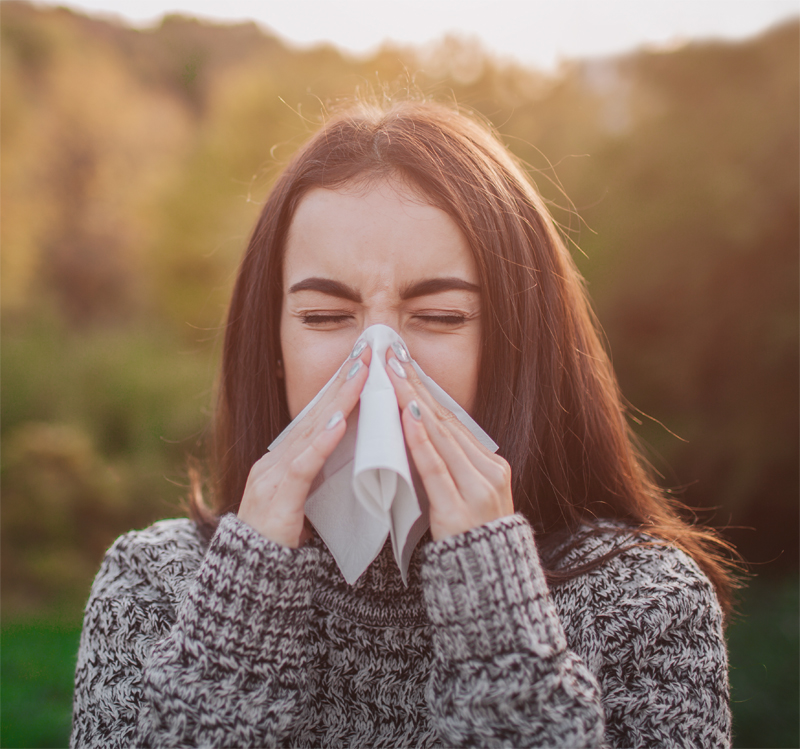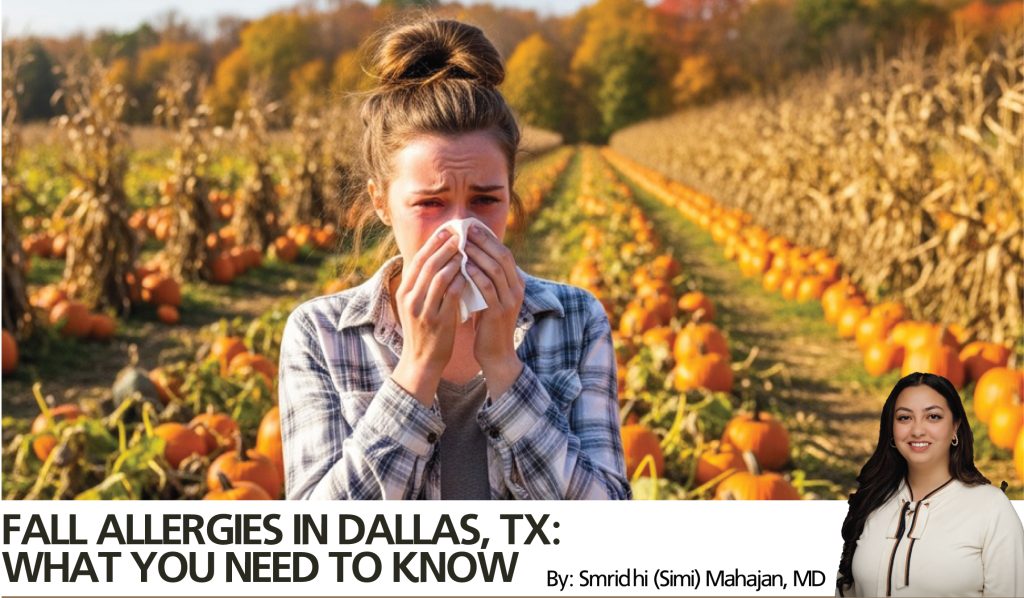In North Texas, allergy season isn’t just in the spring. If you’ve noticed sneezing, congestion, or itchy eyes in the fall months of September, October, or November, you’re not alone. Many people in Dallas and throughout Texas suffer from fall allergies, which can make the cooler, festive months less enjoyable.
What Causes Fall Allergies in North Texas?
Ragweed pollen is one of the biggest offenders, blooming
from late August until the first frost. In North Texas, this
can be as late as November. Ragweed pollens thrive during
cool nights and warm days. Just one plant can release
millions of pollen grains, and thanks to our windy Texas
weather, those grains can travel for miles.
Other local triggers include:
Mold spores – Moisture is critical for mold growth, and the
frequent storms and high humidity allow molds to thrive
Other weeds – Plants like sagebrush, pigweed, and marsh
elder can add to the mix
In general, pollen levels tend to peak in the morning hours.
Rain does wash the pollens away, but pollen counts tend to
increase after rainfall and on windy, warm days!
The fall season is closely followed by “cedar fever” in the
winter, when mountain cedar pollen drifts up from Central
Texas in December and January.

Common Fall Allergy Symptoms
If you’ve been dealing with symptoms for weeks and they aren’t improving like a cold or viral infection does, it’s probably allergies.
The most common allergy symptoms include:+Congestion, stuffiness, or a runny nose
+Sneezing
+Itchy, watery eyes
+Post-nasal drip or scratchy throat
+Fatigue from poor sleep or constant congestion
How to Find Relief from Fall Allergies in Dallas
Living in North Texas means you can’t escape pollen completely, and moving to another climate to avoid allergies is usually not successful! However, you can take steps to reduce symptoms:
- Check the pollen count: Local forecasts and apps will tell you when ragweed is at its peak. Try to limit outdoor activity on high-count days.
- Keep windows shut: As nice as the fall breeze feels, it brings pollen inside. Try to cool your residence in another manner, such as air conditioning.
- Shower after being outside: This helps remove pollen from skin and hair.
- Try air filters: HEPA filters can reduce pollen and dander inside your home.
- Visit a Family Allergy & Asthma Care board-certified allergist: If medications aren’t
enough, allergy testing and treatments like
immunotherapy (allergy shots or tablets) can offer
long-term relief.
Looking for Allergy Relief That Actually Works Where You Live?
When you choose Family Allergy & Asthma Care,
you’re choosing a local expert who truly understands North Texas allergies.
Our allergists are familiar with the area’s unique pollen patterns and tailor your care to help you breathe and feel your best year-round. We
look forward to helping you!




